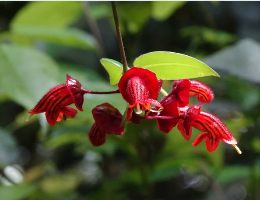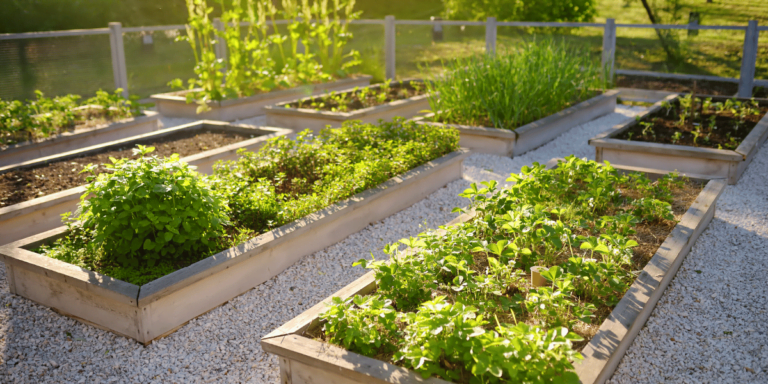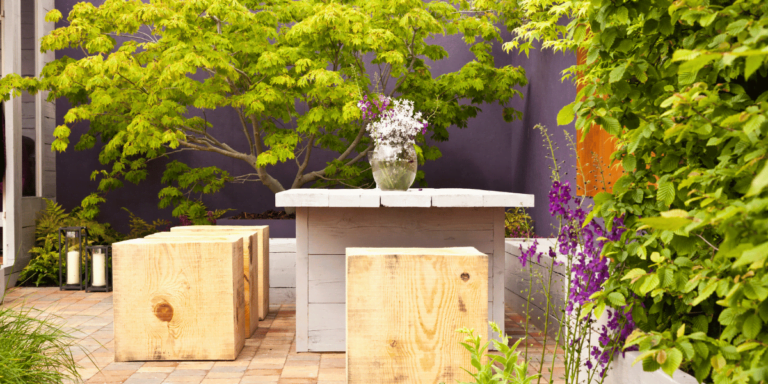Introduction
The Lipstick Plant (Aeschynanthus) stands out as a delightful indoor plant known for its vibrant tubular flowers that resemble a tube of lipstick. This tropical beauty is not only a visual treat but also a relatively easy-to-care-for houseplant, making it perfect for both newbie plant lovers and seasoned green thumbs. Dive into our comprehensive review and discover the best care techniques and potential pitfalls to avoid ensuring your Lipstick Plant flourishes.
The key specifications for the Lipstick Plant (Aeschynanthus):
| Specification | Details |
|---|---|
| Common Names | Lipstick Plant, Basket Vine |
| Botanical Name | Aeschynanthus |
| Family | Gesneriaceae |
| Plant Type | Perennial |
| Mature Size | Typically reaches a length of 20 to 30 inches when grown indoors. Some varieties can grow even longer, depending on conditions. |
| Sun Exposure | Prefers bright, indirect light. Avoid direct sunlight as it can scorch the leaves. |
| Soil Type | Well-draining soil mixture, ideally a blend of potting soil, perlite, and orchid bark. |
| Soil pH | Slightly acidic to neutral; typically in the range of 6.1 to 7.5. |
| Bloom Time | Primarily in summer, though it can flower sporadically throughout the year in optimal conditions. |
| Flower Color | Mainly red, though there are varieties with orange, peach, or even yellow blooms. |
| Hardiness Zones | Suited for USDA zones 10 and 11 when grown outdoors. Indoors, it can thrive in most zones as long as the conditions mimic its natural habitat. |
| Native Area | Native to the humid, tropical rainforests of Asia, particularly countries like Malaysia, Indonesia, and the Philippines. |
| Benefit | Apart from its ornamental beauty, the Lipstick Plant can also act as an air purifier, improving indoor air quality by filtering out certain pollutants. Its vibrant blooms can also be a source of mood enhancement for many plant enthusiasts. |
Plant Care
The primary goal with any indoor plant, especially a vibrant specimen like the Lipstick Plant, is to recreate its natural habitat to some extent. Originating from the humid, shadowy floors of Asian rainforests, this plant is adapted to a specific set of conditions. Though it might sound challenging, with the right care and attention, you can easily emulate these conditions within your home.
Light
Being a native of the forest floor, the Lipstick Plant thrives in bright, indirect light. Too much direct sunlight can scorch the leaves, leaving unsightly marks. On the other hand, inadequate light may result in fewer flowers. A north or east-facing windowsill is often ideal. If you notice leggy growth, consider moving your plant to a brighter location.
Soil
This tropical plant loves well-draining soil. A mixture of potting soil, perlite, and orchid bark typically works well. It’s essential to ensure that the soil remains moist but never soggy. Overly wet soil can lead to root rot, a common ailment in many indoor plants, including the Lipstick Plant.
Water
Watering is crucial for the Lipstick Plant, and the mantra here is ‘consistent but cautious.’ The top inch of soil should be allowed to dry out between waterings. Using lukewarm water, drench the soil until water starts to seep out of the bottom of the pot. Always ensure your pot has proper drainage holes to prevent waterlogging.
Temperature and Humidity
The Lipstick Plant enjoys warm and humid conditions, similar to its tropical habitat. Ideal temperatures range between 65°F and 80°F. Avoid placing the plant near radiators, air conditioners, or drafts. As for humidity, if you live in a dry area, consider placing the pot on a tray of wet pebbles or using a humidifier to maintain moisture levels.
Fertilizer
During the growing season, which is typically spring to early fall, feed the plant with a balanced liquid fertilizer every two to four weeks. Reduce feeding during the dormant winter months. Always follow the fertilizer’s recommended dosage as over-fertilization can harm the plant.
Pruning
Pruning is beneficial for maintaining the plant’s shape and encouraging fuller growth. It’s best to prune in early spring before the new growth starts. Snip off any leggy or overgrown vines to maintain the desired shape.
Overwintering
As winter approaches, the Lipstick Plant enters a period of dormancy. During this phase, it requires less water, and feeding should be reduced. Ensure the plant is kept away from cold drafts, heaters, or overly dry environments.
Propagating Plant
Propagation is an exciting and rewarding venture with the Lipstick Plant. The most common method is stem cuttings. In spring, take a 4-inch long cutting just below a node and allow it to air dry for a day. Then, plant it in a pot with a well-draining soil mixture. Keep the soil moist, and in a few weeks, roots will start to develop.
Types of Lipstick Plant
While the generic name ‘Lipstick Plant’ often brings to mind a specific image, there are several beautiful varieties within the Aeschynanthus genus.
- Aeschynanthus radicans – The classic variety with bright red blooms.
- Aeschynanthus lobbianus – Often boasts longer, trailing stems and similarly vibrant blooms.
- Aeschynanthus ‘Mona Lisa’ – A popular hybrid with large, bold flowers.
- Aeschynanthus speciosus – Known for its fiery orange-red blooms.
- Aeschynanthus pulcher – Distinct for its peach-colored flowers.
While each variety has its unique charm, the care guidelines largely remain consistent across the board.
Common Pests & Plant Diseases with Solutions
Like many indoor plants, the Lipstick Plant isn’t immune to pests and diseases. Some common issues include:
- Mealybugs: These tiny white pests suck sap from the plant, weakening it over time. Wipe the plant with a cloth dipped in soapy water or use insecticidal soap.
- Spider Mites: Indicated by web-like structures on the plant. Increase humidity and wash the plant under a strong stream of water.
- Scale: Brown or tan bumps on the plant’s stems. Scrape them off gently and apply neem oil.
- Root Rot: Caused by overwatering. Ensure well-draining soil, and if the plant is severely affected, consider repotting into fresh, dry soil.
How to Get the Lipstick Plant to Bloom
Flowering is the Lipstick Plant’s pièce de résistance. To encourage blooming:
- Light: Ensure the plant receives adequate bright, indirect light.
- Feeding: During the growing season, use a phosphorus-rich fertilizer to promote flowering.
- Pruning: Regularly prune the plant, which can stimulate blooming.
- Consistent care: Adhering to proper watering, light, and feeding schedules sets a strong foundation for blooms.
Common Problems with the Lipstick Plant
- Drooping Leaves: Often a sign of underwatering or overwatering. Adjust your watering routine accordingly.
- Leaf Drop: Sudden temperature changes or cold drafts can cause this. Ensure a stable environment for your plant.
- No Flowers: This can result from inadequate light or insufficient nutrients. Move to a brighter spot and feed with a balanced fertilizer.
- Brown Leaf Tips: Indicates low humidity. Increase moisture levels with a humidifier or a tray of wet pebbles.
By understanding the diverse varieties, potential problems, and care needs of the Lipstick Plant, you can enjoy its captivating presence in your space for years to come. Regular monitoring and timely intervention can keep pests and diseases at bay, allowing your plant to bloom in all its glory.
Quickly Declining
Despite your best efforts, sometimes plants may show signs of decline. With the Lipstick Plant, it’s often due to overwatering, excessive sunlight, or pests. Regularly inspect the plant for signs of stress and adjust your care routine accordingly.
In Summary: Thriving with Your Lipstick Plant
With its lush green foliage and radiant blooms, the Lipstick Plant is undeniably a captivating addition to any indoor space. By understanding its native environment and adjusting your care routine to mimic those conditions, you’ll be rewarded with a thriving, blooming plant that’s sure to be the envy of many.
Frequently Asked Questions
Decode the magic of gardens with our guide to Landscaping Styles Frequently Asked Questions.
- Yes, but only in regions that closely mimic its native tropical habitat. It’s best suited for USDA zones 10 and 11
- Repotting every 2-3 years is ideal. This not only provides fresh soil but also ensures the plant doesn’t become root-bound.
- While not considered highly toxic, it’s best to keep them away from pets as they might cause mild digestive upset if ingested.
- Yellowing leaves can be a sign of overwatering or insufficient light. Adjust your care routine based on the plant’s specific needs.

















